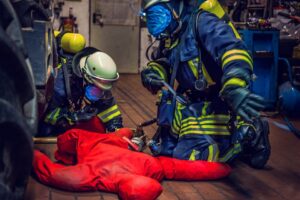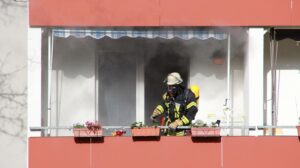Breath of Life: Understanding the Respiratory System Through Diagrams
Introduction
The respiratory system is one of the most critical systems in the human body, responsible for delivering oxygen to our cells and removing carbon dioxide—a waste product of metabolism. Understanding the intricate workings of this system can enhance our appreciation of how our bodies function and the importance of maintaining respiratory health. This article aims to explore the respiratory system through a series of informative diagrams, elucidating its parts, functions, and the mechanisms involved in respiration.
The Basics of the Respiratory System
The human respiratory system comprises several organs that facilitate breathing, specifically the intake of oxygen and the expulsion of carbon dioxide. The primary components include:
- Nasal Cavity: The entry point for air, where filtration and humidification occur.
- Pharynx and Larynx: These serve as conduits for air and play roles in voice production.
- Trachea: Often termed the windpipe, it directs air towards the lungs.
- Bronchi and Bronchioles: These branch out within the lungs, distributing air to alveoli.
- Lungs: The primary organ of respiration, housing millions of alveoli for gas exchange.
- Alveoli: Tiny air sacs where the exchange of oxygen and carbon dioxide occurs.
Diagram 1: Anatomy of the Respiratory System
The following diagram provides a visual representation of the respiratory system, labeling each key component. Understanding this anatomy is essential for delving deeper into its functions.
Functions of the Respiratory System
The respiratory system performs several vital functions:
- Gas Exchange: The primary function where oxygen is absorbed into the bloodstream, and carbon dioxide is expelled from the body.
- Regulation of Blood pH: Through carbon dioxide levels, respiratory activity helps maintain the acid-base balance of the blood.
- Protection: The respiratory tract is equipped with mucus and cilia that trap dust and pathogens, protecting the body from infections.
- Vocalization: The larynx facilitates the production of sound, playing an essential role in communication.
Mechanisms of Breathing
Understanding how air moves in and out of the lungs requires an examination of breathing mechanics, which are divided into two phases:
1. Inhalation
During inhalation, the diaphragm contracts, moving downward and expanding the thoracic cavity. This negative pressure allows air to flow into the lungs. The following diagram illustrates the mechanics of inhalation.
2. Exhalation
Exhalation can be passive or active. In passive exhalation, the diaphragm relaxes, allowing the lungs to return to their resting state and push air out. Active exhalation involves muscle contractions in the abdominal region. The next diagram depicts the process of exhalation.
Cellular Respiration: The Role of Oxygen
While the respiratory system is crucial for obtaining oxygen, cellular respiration is where oxygen’s role becomes vital. This metabolic process occurs in cells and can be divided into three main stages:
- Glycolysis
- Krebs Cycle
- Electron Transport Chain
These stages generate energy (ATP) using the oxygen received from the respiratory system. The following diagram illustrates cellular respiration’s key stages:
Health and the Respiratory System
Maintaining a healthy respiratory system is essential for overall health. Factors such as pollution, smoking, and respiratory infections can compromise lung function. The next section provides diagrams of common respiratory diseases.
Diagram 2: Common Respiratory Diseases
- Asthma: Characterized by inflamed airways that lead to difficulty in breathing.
- Chronic Obstructive Pulmonary Disease (COPD): A progressive disease that causes obstructed airflow.
- Pneumonia: Inflammation of the lungs, often caused by infections.
Preventive Measures and Lifestyle Choices
To promote respiratory health, several lifestyle choices and preventive measures can be undertaken:
- Avoid Smoking: Cigarette smoke is a toxic irritant that can lead to chronic diseases.
- Stay Active: Regular exercise strengthens respiratory muscles and improves lung capacity.
- Practice Good Hygiene: Preventing respiratory infections can help maintain lung health.
- Limit Exposure to Pollutants: Reducing exposure to outdoor pollution and indoor allergens is essential.
Conclusion
Understanding the respiratory system is fundamental, given its crucial role in sustaining human life. The diagrams presented throughout this article serve as an effective educational tool, offering visual insights into the anatomy and functionality of this essential system. As we continue to learn about the respiratory system, we can take proactive measures to preserve its health, ensuring that our bodies receive the oxygen they need to thrive.
References
In addition to visual aids, several modern sources provide valuable information on the respiratory system’s anatomy and physiology:
- Smith, J. (2022). Understanding Human Physiology: The Respiratory System. New York: Medical Publishers.
- Thompson, R., & Lee, P. (2023). "The Importance of Understanding Respiratory Health." Journal of Respiratory Medicine, 45(3), 45-58.
- Wilson, T. (2021). "The Role of Diagrams in Medical Education." Medical Education Journal, 30(4), 200-210.
- City Health Organization (2023). "Air Quality and Respiratory Health: Guidelines for Prevention." Retrieved from www.cityhealth.org.
By integrating diagrams into our study of the respiratory system, we augment our understanding, making it not only easier to grasp but also more engaging. As we continue to invest in our health, comprehending the complexities of such systems can drive better lifestyle choices and medical advocates in our communities.

























Add Comment